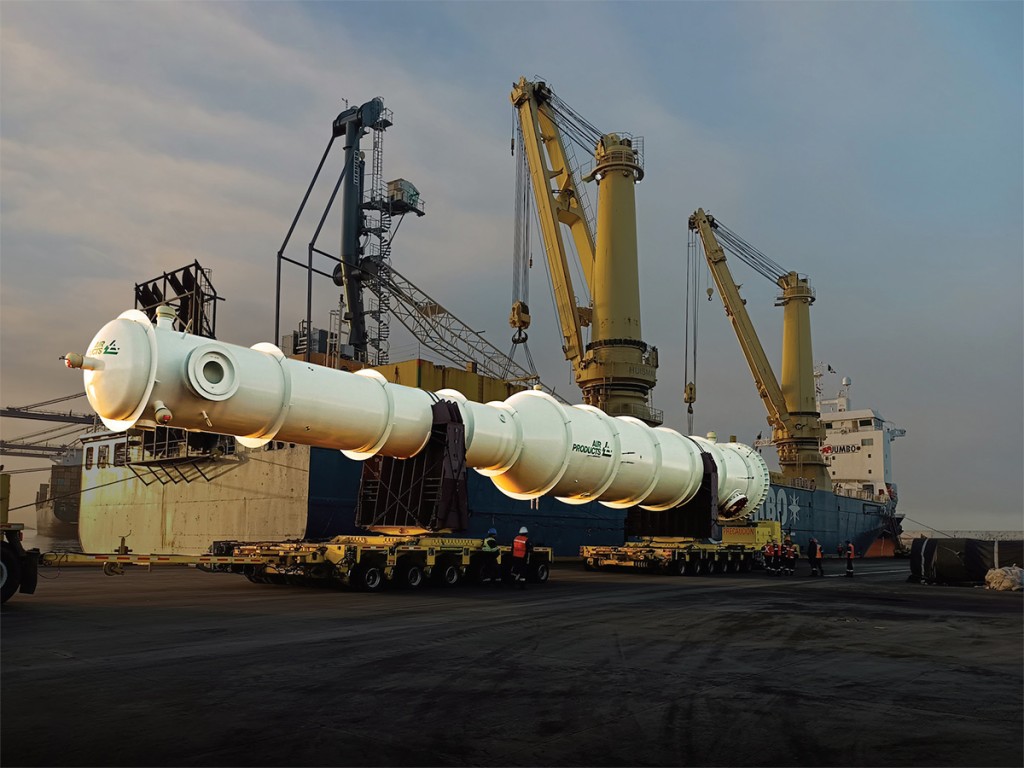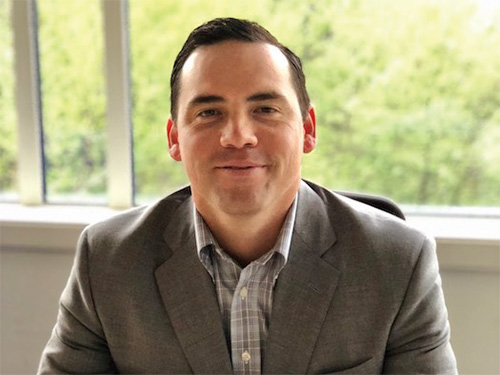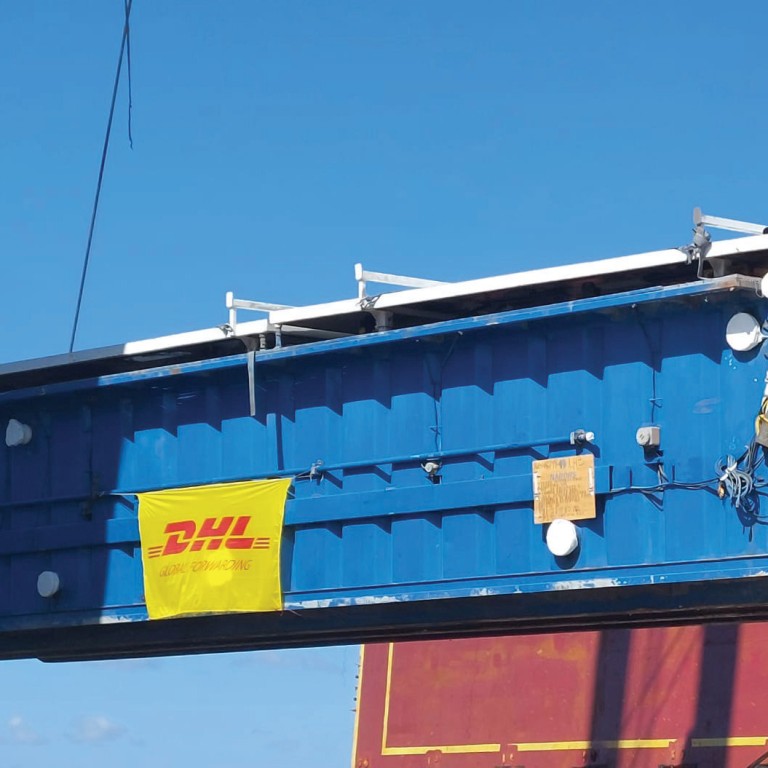Jake Swanson, regional vice president the Americas for DHL Global Forwarding’s Industrial Projects’ division, outlines to AJOT what it takes to attract and retain people in the project sector.

Attracting and retaining talent in freight transportation has been tougher since the COVID 19 pandemic hit. But to grow today’s complicated, far-flung breakbulk transport sector, logistics leaders must aggressively invest capital, time, and training in college graduates with technology skills and problem-solving mindsets.
No easy feat. It has always been a challenge to locate, hire and keep talent in the project logistics sector as the market keeps expanding and outsized freight becomes bigger and more sophisticated. Especially now as seasoned breakbulk specialists retire or look elsewhere, finding new talent and creatively persuading these newcomers this can be a rewarding career has to be a critical focus across the industry.
That was the thrust of the opening remarks delivered at the recent Breakbulk Conference in Houston by Jake Swanson, regional vice president, the Americas for DHL Global Forwarding’s Industrial Projects’ division. “My focus was on people development and the importance of the industry to reach down to the universities to bring (along) and develop the next generation,” he told the American Journal of Transportation (AJOT) in an interview.

DHL’s NextGen IP
The conference, entitled Outlook 2024 — Challenges, Opportunities, and Expanding Role of Project Forwarders, — was an ideal setting for Swanson’s keynote. Houston is home base for DHL Global Forwarding’s innovative 15-month management trainee rotational program called NextGen IP where participants work on three continents in two years.
During that time, says Swanson, who is also based in Houston, trainees have hands-on experience in warehouse operations, air/ocean export operations, air/ocean import operations and sales. Again, the program emphasizes global experience by transferring trainees to any one of the 200-plus countries the company serves. DHL, which describes itself as the world’s largest logistics company, has approximately 700,000 employees.
(A spokeswoman in Santiago, Chile says DHL Global Forwarding has been certified as a “top employer” globally including Africa, Europe, the Middle East, and North America for 2023). Swanson wasn’t lecturing the breakbulk sector of the logistics industry to follow in DHL Global Forwarding’s footsteps. “I just encouraged the industry to invest in our future,” he says. “It was more like an industry challenge – that we all need to work together. But the fact is many, many breakbulk logistics companies attending are already doing the same thing to build leaders for the future.”

Bright Year for Project Logistics in ‘24
The DHL executive sees a bright year for project logistics in 2024 and beyond with an emphasis on regional sourcing in the Americas Region, and with Houston continuing to be a project hub and busy gateway. Specifically, he says semiconductors, technology companies, mining and oil and gas are generating the most activity among nearshoring project sectors.
Essentially, “regional sourcing in project logistics is becoming a key strategy,” says Swanson, adding that materials are being sourced and purchased regionally and the supply chain is being brought closer to home. “This is a trend DHL has been preparing itself for and has been since the pandemic.
A prime example of this has been the shortage of semiconductors in many industries “because we were relying so heavily locally on Asia and China for that valuable commodity,” he says. The supply chain logjam during the pandemic caused semiconductor manufacturers like Intel to “re-look” and build fabrication facilities closer to the customer “so, we don’t run into this circumstance again.”
(A recent report by Tom’s Hardware newsletter lists five major chipmakers including Intel, GlobalFoundries, Samsung Foundry, TSMC and Texas Instruments as building production facilities in the US, proof that nearshoring in semiconductors is not just a trend but a restructuring of the commodity).
“You also see this now happening with lithium mining where there is huge focus today for electronic vehicle batteries and cell phones,” Swanson explains. “It all started in South America with all the lithium mines in northern Argentina and northern Chile. But now we’re able to find that natural resource in Nevada and Colorado and Eastern Canada and other future locations in North America. US companies are trying to get their mining facilities up and running so they can get commitments from auto manufacturers, and we are handling the regional project cargo movements for constructing these plants. It is a bit of a race.”
However, global DHL as a project forwarder isn’t setting its sights exclusively on the US market. It concentrates on the total commodity movement. “We’re asset light as a freight forwarder but we’re managing all the shipments from a transport standpoint,” he says. “The mine sites are often in difficult locations in the Andes Mountains, so we are partnering with the asset owners, the right trucking companies, developing the routing system, working with countries like Argentina and Chile, with ports, borders—coordinating all of it and ensuring that the construction of (US) mining facilities at the job site is on schedule.
DHL is seasoned in its work in lithium transport and terms the South American market as “maturing.” Swanson says the logistics company has handled “multiple lithium projects” while its work in North America “is just getting started.” Interestingly, DHL works with the lithium mine owners and the construction companies and not with EV automobile manufacturers such as current industry leader Tesla.
Project Forwarding as a People Business
Asked what advantage DHL Global Forwarding has over the competition in winning project assignments? Swanson sums it up in a word “people”. Adding, “We have 750 project specialists on teams in 60 countries that are part of our global forwarding group, and we have very strong people in the Americas. It’s very important to have boots on the ground where our customers are sourcing materials. We’re not working with agents on sending people to areas where we’re not established.
“That’s important when you’re moving specialized equipment,” he continues. “It’s different than moving containers and air freight. Project logistics requires more planning—on strict schedules—a total solution. The biggest challenge is getting bigger modularized components to the mine site, so you don’t have to construct pieces there. You want to assemble components offsite.”
That’s crucial, Swanson says, when the mine site is, for example, in the Andes Mountains with its extremely high altitudes, “Construction workers can only stay at those job sites for two weeks and then have to come back down to normal altitudes.”
DHL’s project teams often focus not only on getting oversized cargo from coastal seaports to inland mine site but it’s more than physical logistics. They are deeply involved in the state permitting process that is mandatory when heavy haul truckers move dimensioned project cargoes along extremely detailed routes within its borders. That requires DHL finding the right partners for different elements of the total move, Swanson says.
Interestingly, DHL’s project cargo teams do not just focus on advising on oversize moves in the US. “Every country has its own processes and that’s one of our strengths by having global teams. We don’t have some guy in Texas telling Chileans and Argentines to do project moves in their countries. They have experts and we have team members right there on the spot to support them,” he says.
Semiconductor Business
In addition to the mining sector, the company’s Industrial Projects teams are deeply involved in the semiconductor industry. Here, DHL has teams “all over the US” where chip fabrication factories are being built, again to shorten the supply chain so that any manufacturers using semiconductors in their products are not dependent on overseas sources and long and costly transportation.
“We’re doing project work in Arizona, New Mexico, Oregon, Ohio, Texas, Idaho, New York and Ohio,” Swanson says, “We see moving project equipment and project cargo as areas where we can grow over the next two to three years.” As for air freighting the actual semiconductors, he points out that DHL has “been doing that for years but that’s handled by another part of the ‘house.’”
In the renewable energy sector, DHL’s project specialists were recently awarded a contract to work with a new solar farm in Alabama. As for wind energy, more of the company’s project teams in that field are based in Europe where giant on and offshore wind towers are more deeply entrenched as an alternative power source, according to Swanson.
A new area for potential project team assignments, he adds, is data centers which are attractive to DHL with its global presence. “We’ve had some engagement in that area, and more are coming online,” says the project executive for the Americas.
While Swanson is optimistic about a positive year for his team in 2024, DHL is throttling forward for the future. Hiring talented people is only one component of its vision for tomorrow. “We are really pushing ourselves to be innovators in project logistics. We have ‘innovation centers’ in different parts of the globe and our newest one is in Chicago. They’re basically like (research and development) laboratories where we invite customers in and discuss how we can partner together. DHL is collaborative. We solve logistical problems.”

Follow us on social media: